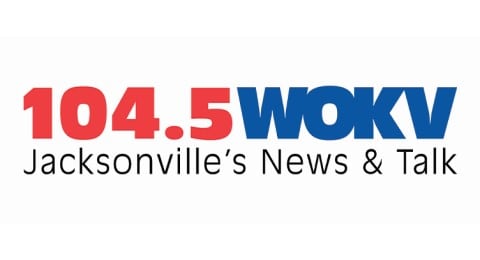More than one year since I first started asking the City of Jacksonville how much vacant land it owns, I’m finally getting answers.
It’s been a long journey since I first learned Jacksonville didn’t have an accurate grasp of how much property it owned, how much was vacant, or the value of it all. At that time, the city was putting together the outline for a project to change that- getting a private company to inventory and assess all the land, determine potential future use and install a software system which would maintain the rolls moving forward. The price tag that was set for the project, $150,000, proved to be too low for the scope of the project, however, with both bids that were submitted not stacking up to what was asked.
So Public Works began tackling the inventory portion in house.
“We were able to assign kind of an all-hands on deck assignment for this project,” says Public Works Director Jim Robinson.
The inventory was completed at the end of August, and I’ve now gotten my hands on the full list.
Just over 2800 parcels of land are listed under Jacksonville ownership. Robinson says just over 300 are actually JEA properties, bringing the total portfolio of Jacksonville-owned land to 2,515- with a current market value of just over $1.5 billion.
While the total inventory is not far from what you could find through a search of the Property Appraiser's records, a distinction made for the first time with this list is how much of that real estate is vacant. 395 of those parcels are considered by the city to be lazy assets- parcels that are vacant or underutilized and have potential future use, like for economic development, commercial investment or government facilities.
The market value on those “lazy” parcels listed on the spreadsheet I obtained from the city stands at nearly $125 million. Robinson preferred not to give a total until more work is done to get an accurate evaluation of the current state of the property and other related questions, so that led me to search the Property Appraiser’s website to see how the numbers stacked up to the list generated from the city a little over one month ago.
Of the dozen or so properties I searched, many had a market value on the website, which is updated daily, actually higher than what was listed on the spreadsheet. For example, the old County Courthouse has a market value of $17,766,056 according to the city spreadsheet. The market and assessed values according to the Property Appraiser’s website on Sunday list the courthouse as $18,452,566 under the confirmed 2012 pricing or $17,986,000 under the 2013 evaluation still in process. This means the price tag on the vacant properties could be even higher than what the list reflects- the exact value is part of what the city will continue to work to determine. During that process, it's also possible the city will argue a property is less valuable than the listing, possibly relating to a lack of maintenance. Essentially, while this market value listing gives a good working figure, there is likely some give in either direction.
I asked Robinson whether he was surprised to see the real estate portfolio- which many officials had before now only described as “vast”- have only 400 properties that could hold future development options. He tells me he was not surprised at all.
“It really proves that we’re the largest park system in the country as far as real estate is concerned,” he says.
A large portion of the portfolio that is not "lazy" is park or preservation land. I also see significant portions of land set aside for drainage, wetlands, environmental concerns, ponds or other natural occurrences that prevent development. While some of these parcels, and many others on the roll, are considered vacant, the city has determined they have no future development value. Robinson declined to comment on whether the city has all the resources it needs to maintain this land, deferring the question instead to Parks and Rec.
The remaining portion includes small pieces of land that hold no development potential, like right-of-ways, as well as buildings that are in use daily- from fire stations to the new courthouse or City Hall.
Breaking down the vacant or underutilized parcels, you again see some buildings or areas that are widely known- like the Snyder Memorial building or Jacksonville shipyards. Many of the properties, however, are residential plots which have come to city ownership through tax reversion or a similar process. Robinson says many of these residential plots are dedicated for public housing, meaning there’s a potential they won’t actually wind up on commercial tax rolls at any point in the near future.
In all, the acreage of the vacant or underutilized land amounts to under 1% of the city’s entire portfolio, but the value makes up more than 8% of the portfolio.
And that value comes back to your wallet, because these are parcels of land owned by the city and therefore not putting any money on the tax rolls. In addition to the one-time money that could be gained from a sale, there’s also the potential continued infusion of tax money if the property goes in to private hands. Other options on the table include renting some of the properties- which again, could provide a continued revenue stream- or even leaving the parcel as it is.
But despite taking a significant first step, the timeline for getting the rest of the project done- and therefore deciding what to do with these vacant properties- is still up in the air. Coming up Tuesday on WOKV News I’m breaking down the road still to go to free up the city’s vacant investment.

:quality(70)/cloudfront-us-east-1.images.arcpublishing.com/cmg/SUIFOQ4UC3F7GJIVL7BXU34A3A.jpg)
:quality(70)/cloudfront-us-east-1.images.arcpublishing.com/cmg/HJ3L3HBBJBH6PB5ZFB3SVGFXSU.png)
:quality(70)/cloudfront-us-east-1.images.arcpublishing.com/cmg/4TQDXERT5VGORNZ4NQWXNO5H64.png)
:quality(70)/cloudfront-us-east-1.images.arcpublishing.com/cmg/SKX4RKW645ERTATCLA4V2FVRKQ.png)
:quality(70)/cloudfront-us-east-1.images.arcpublishing.com/cmg/5PIZRG7NYBAHDDABTG5BNVGO6Y.jpg)
:quality(70)/cloudfront-us-east-1.images.arcpublishing.com/cmg/V7JDMMD6JJEEHIL6C7OSLV3ABU.png)
:quality(70)/cloudfront-us-east-1.images.arcpublishing.com/cmg/Q6ZTFINNCKGTGCYGQE7V3GQ5B4.jpg)
:quality(70)/cloudfront-us-east-1.images.arcpublishing.com/cmg/UZPULSM5L6BCTV33STOWB4EFVY.jpg)
:quality(70)/cloudfront-us-east-1.images.arcpublishing.com/cmg/4I6XN2MKFTXEBFKR3UVLQ2YD2M.jpg)
